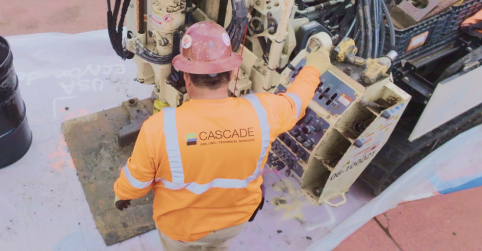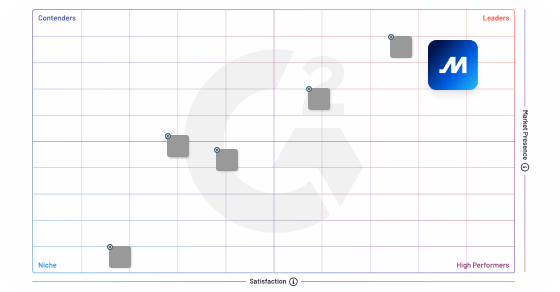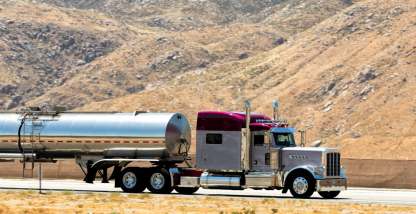Managing a fleet of vehicles can be complex, but telematics technology offers a powerful solution. For fleet managers, the benefits of telematics include lower fuel costs, faster routes, and better productivity. By harnessing the power of telematics, fleets can work smarter, safer, and more affordably. Keep reading for more on the top benefits of fleet telematics and take a big step toward transforming your business.
1. Lower fuel costs
One of the most immediate benefits of telematics is its ability to manage and cut fuel costs. With GPS tracking and advanced telematics, fleet managers can ensure that drivers are taking the most direct routes. Telematics software monitors driver behavior, including idle times, rapid acceleration, and other habits that waste significant amounts of fuel. Idling for extended periods in a large vehicle, for example, can burn several gallons of diesel. By identifying such wasteful habits, fleet managers can coach drivers on more efficient driving habits, leading to big savings.
2. Timely maintenance and enhanced ROI
Vehicle maintenance is another area where the benefits of fleet telematics shine. Telematics provides real-time diagnostic data, allowing fleet managers to schedule preventive maintenance before minor issues become major problems. For essential maintenance tasks like oil changes, brake checks, and tire rotations, fleet managers can automate service reminders — extending vehicle lifespan and reducing unexpected downtime.
Telematics also allows for remote monitoring of vehicle health. Sensors can detect critical issues such as engine malfunctions or brake wear and tear, alerting managers to these problems early before they have a chance to escalate. By keeping vehicles in optimal condition, fleet managers can avoid costly repairs and minimize vehicle downtime.
3. Faster, more efficient routes
Optimizing delivery routes is a key strategy for boosting fleet efficiency. Telematics enables fleet managers to plan the most effective routes, taking into account real-time traffic patterns, road closures, and other factors that impact travel time. With the help of technology, managers can adjust routes easily to avoid traffic congestion, roadwork, or accidents, ensuring that drivers take the fastest, most direct path.
Just as efficient routing saves time, it also cuts fuel consumption. Meanwhile, being able to provide accurate delivery estimates improves customer satisfaction, giving businesses a competitive edge.
4. Real-time vehicle tracking for enhanced visibility
Real-time GPS fleet tracking is one of the biggest benefits of telematics. Knowing the exact location of every vehicle in your fleet at any time allows fleet managers to respond quickly to emergencies or unplanned disruptions. Whether a vehicle breaks down or gets into an accident, managers can use telematics to send assistance to the right location quickly.
Real-time tracking also enables better communication with customers. With accurate delivery times and route tracking, you can update customers on their shipment status, building trust and reliability.
5. Safer driving performance
Driver safety is a top priority in fleet management, and an area with many telematics benefits. By monitoring driver behavior, telematics can track incidents of speeding, harsh braking, or aggressive driving. Fleet managers can then use this data to coach drivers on safer driving practices and prevent accidents.
Telematics can also promote compliance with safety regulations. By tracking Hours of Service (HOS), telematics ensures drivers adhere to mandated rest periods, reducing the potential for drowsy driving and fatigue-related accidents. Many telematics systems include in-cab alerts that notify drivers when they’re engaging in unsafe behavior, helping to correct these risks in real time.
6. Better compliance
Fleet managers must ensure their operations comply with various local, state, and federal regulations. Telematics systems can simplify this process by automatically logging required data, such as driver hours, vehicle maintenance records, and fuel use. Automated tracking reduces administrative burdens and helps avoid costly fines for non-compliance.
In addition to legal compliance, telematics systems can help fleets meet environmental goals by monitoring fuel consumption and reducing carbon emissions. Many organizations now use telematics data to report on their sustainability efforts, making telematics an important tool for companies looking to enhance their green credentials.
7. Streamlined operations
Fleet management software integrated with telematics creates a central hub for monitoring and managing fleet activities. This type of software allows managers to access detailed reports on vehicle performance, driver behavior, fuel consumption, and route efficiency. By having multiple data points in one place, fleet managers can make more informed decisions about overall fleet performance.
With telematics-powered fleet management software, daily tasks such as scheduling, dispatching, and reporting become easier and more efficient. This streamlined approach reduces the time spent on manual processes, freeing up managers to focus on more important tasks.
8. Meaningful data feedback
One of the greatest benefits of telematics is the wealth of data it provides. From vehicle diagnostics to fuel consumption reports, telematics data can be analyzed to uncover trends and inefficiencies. Fleet managers can use this data to identify areas for improvement and make data-driven decisions that boost productivity.
For example, by analyzing telematics data, a fleet manager might discover that certain vehicles consistently consume more fuel than others, prompting a deeper investigation into vehicle maintenance or driver behavior. Over time, these insights can lead to operational changes that save money and improve fleet performance.
9. Reduce insurance costs
Telematics can also help lower insurance premiums. Many insurance companies offer discounts to fleets that use telematics to monitor driver behavior and vehicle performance. By demonstrating a commitment to safety through the use of telematics, fleets can often negotiate better rates with insurers.
The data provided by telematics can be especially valuable in the event of an accident. Telematics systems can record critical details such as speed, location, and driver behavior leading up to an incident, providing evidence that can be used to resolve insurance claims more quickly and fairly.
10. Increase customer satisfaction
Finally, one of the indirect benefits of fleet telematics is improved customer satisfaction. By optimizing routes, providing real-time updates, and ensuring timely deliveries, fleets can offer a higher level of service to customers. The ability to track deliveries in real time and receive accurate ETAs can enhance customer trust and loyalty.
Conclusion
The benefits of telematics for fleet management are far reaching, impacting everything from fuel efficiency to driver safety, vehicle maintenance, and customer satisfaction. By leveraging the power of telematics, fleet managers can optimize operations, reduce costs, and improve performance. Whether you’re looking to improve route planning or streamline fleet management processes, telematics technology provides the tools needed to succeed in today’s competitive landscape.
Ready to unlock the full potential of your fleet with Motive?
Telematics technology is transforming fleet management. With Motive, you can optimize your operations, lower costs, and improve productivity. Take control of your fleet’s future with Motive.










